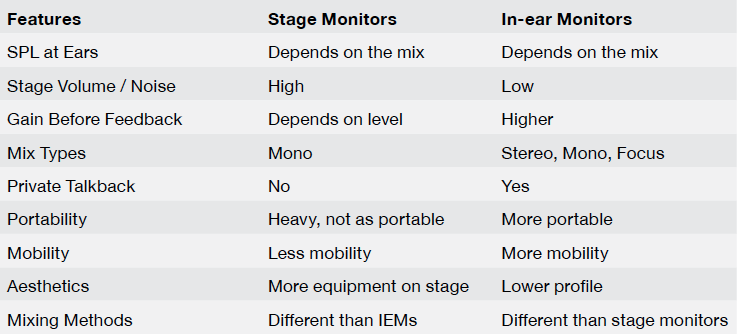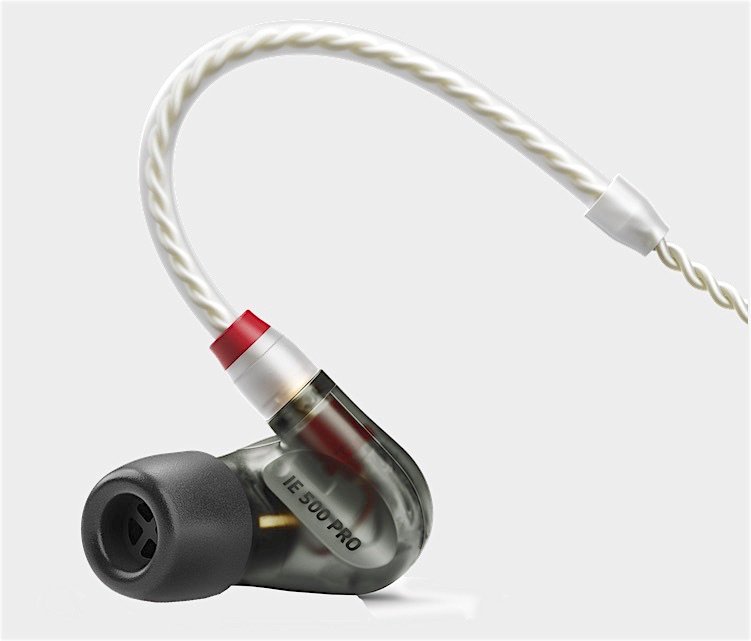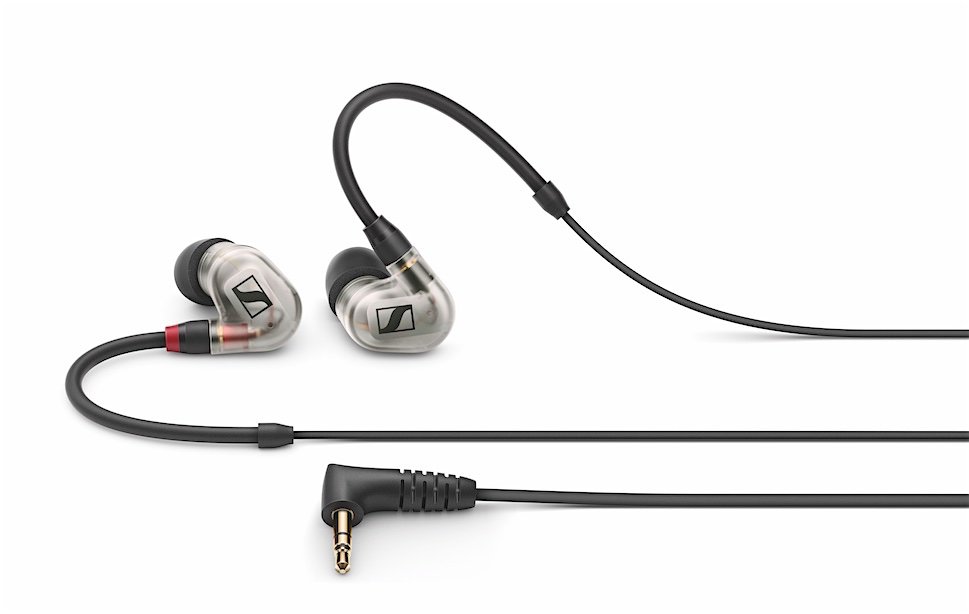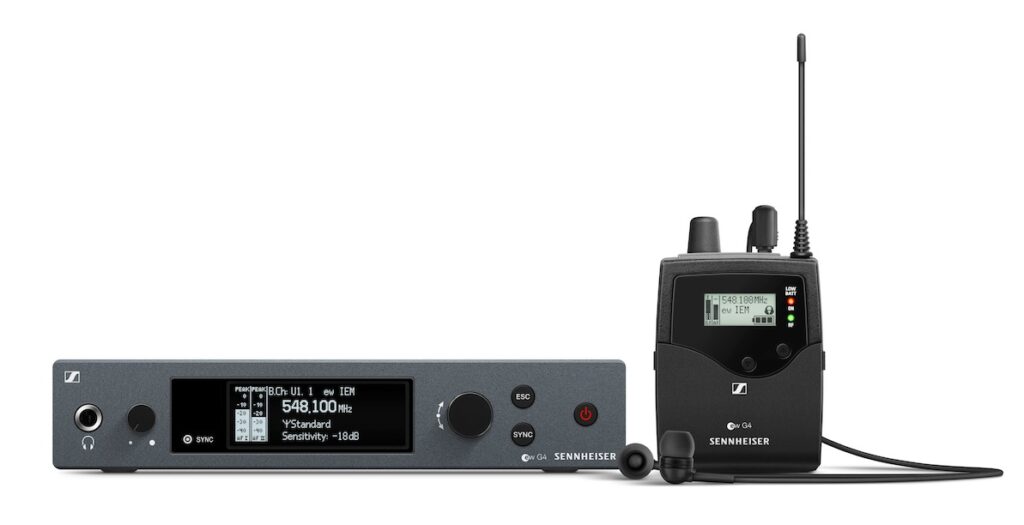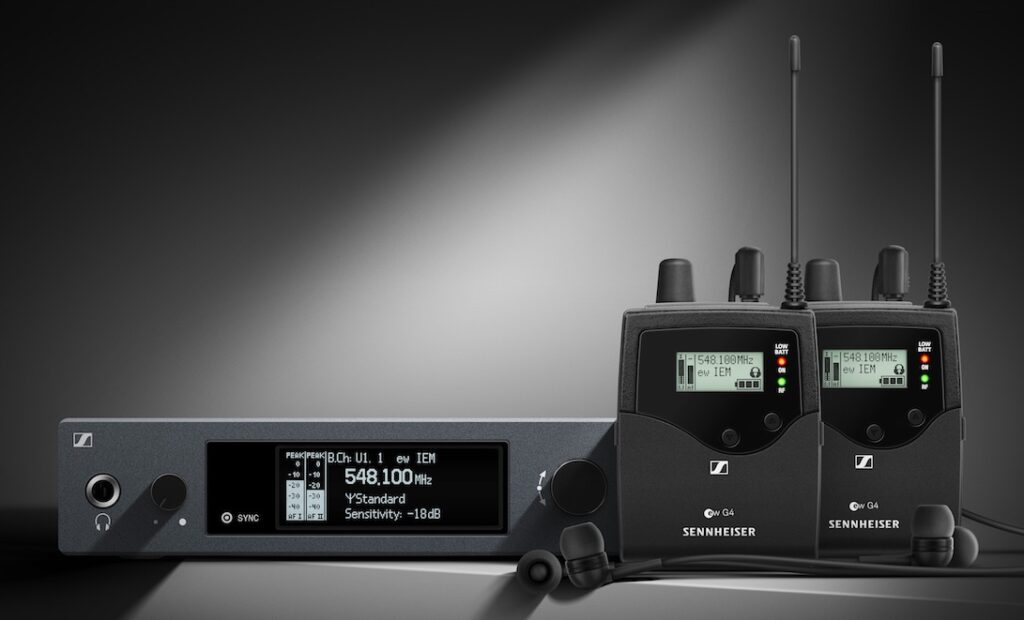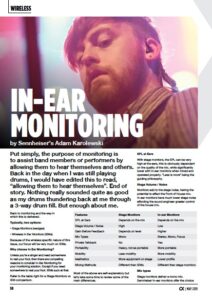News
1 May 2019
In-Ear Monitoring

Subscribe to CX E-News
WIRELESS
In-Ear Monitoring
by Sennheiser’s Adam Karolewski.
Put simply, the purpose of monitoring is to assist band members or performers by allowing them to hear themselves and others. Back in the day when I was still playing drums, I would have edited this to read, “allowing them to hear themselves”. End of story. Nothing really sounded quite as good as my drums thundering back at me through a 3-way drum fill. But enough about me.
Back to monitoring and the way in which this is delivered.
Typically, two options:
•Stage Monitors (wedges)
•Wireless In Ear Monitors (IEMs)
Because of the wireless specific nature of this issue, our focus will be very much on IEMs.
Why choose In Ear Monitoring?
Unless you’re a singer and need somewhere to rest your foot, then there are compelling reasons to consider In-Ear Monitoring for your monitoring solution. Except if you need somewhere to rest your foot. IEMs suck at that.
Refer to the table below for a Stage Monitors vs IEM comparison.
Most of the above are self-explanatory but let’s take some time to review some of the main differences.
SPL at Ears
With stage monitors, the SPL can be very high at the ears, this is obviously dependant on the quality of the mix, while significantly lower with In-ear monitors when mixed and operated properly. “Less is more” being the guiding philosophy.
Stage Volume / Noise
Monitors add to the stage noise, having the potential to effect the Front of House mix. In-ear monitors have much lower stage noise affording the sound engineer greater control of the house mix.
Mix types
Stage monitors deliver a mono mix. Sennheiser In-ear monitors offer the choice of Mono, Stereo or Focus (allowing you to make your own blend out of two separate mono mixes i.e. band mix on one channel and vocals on one channel) mix.
Mobility
Because the In-ears are always, well, in your ears, the mix remains constant regardless of where you are on stage. With stage monitors, the perceived mix changes depending on stage location.
IEM Tips and Tricks – System Design
• Never operate two transmitters on one frequency!
• Never use equal channel/frequency spacing!
• Select coordinated frequencies that avoid TV interference and intermodulation products
• Use an active antenna combining system to avoid intermodulation
• Allow five metres distance between transmitter and receiver to avoid receiver overload
• Allow 8-10 MHz spacing (minimum) between wireless mic and monitoring (IEM) frequencies.
• Operate IEM and mic systems in different frequency bands whenever possible
• Keep transmit antenna cables as short as possible (and use the best quality low-loss cable) to preserve your signal.
• Signal losses are greater for RF than for AF: If long runs are necessary, it’s better to run audio cable than RF cable
• Physically separate transmit and receive antennas to avoid “blocking”
• Consider mono transmission to extend range in distance-critical applications
Suggestions from sound engineers when it comes to using IEMs:
• Plan for increased artist-tech communication. Artists have varying expectations and needs regarding mix.
• If possible, monitor with the same transducer technology as artists. Monitoring and mixing an IEM on a cue wedge or headphones can be misleading.
• Mixing ambient microphones back into the in-ear monitors will help the band have a sense of what is happening around the stage and in the room.
Sennheiser offers two excellent In-Ear Monitoring solutions, our new evolution wireless G4 IEMs and the twin transmitter SR 2050 from the 2000 Series, with the receivers from both systems featuring Sennheiser’s “Engineer” mode.
In “Engineer Mode”, you can read out the settings of other EK receivers and save these settings in profiles using your EK 300 IEM G3 receiver. These profiles can be loaded during a live transmission to monitor and, if necessary, adjust an audio signal reproduced by a read-out EK receiver.
Complementing our IEM systems we now offer our new range of dynamic driver monitoring earbuds, spearheaded with the IE 40 PRO, delivering a warm, yet powerful and precise sound, even in extremely loud environments.
IE 400 PRO and 500 PRO models are scheduled to arrive in June.
From CX Magazine – May 2019
CX Magazine is Australia and New Zealand’s only publication dedicated to entertainment technology news and issues – available in print and online. Read all editions for free or search our archive www.cxnetwork.com.au
© CX Media
Further reading from CX Magazine’s Wireless Feature – May 2019:
Shure Reveal Twinplex. Mission: Take on DPA – by Julius Grafton
Wireless Voodoo – Not a Dark Art – by Fraser Walker
In-Ear Monitoring – by Sennheiser’s Adam Karolewski
Clear-Com FreeSpeak II – by The P.A. People’s Chris Dodds
Signal Out of the Noise – by Simon Byrne
Is that a wireless intercom in your pocket? – by Jand’s Jeff MacKenzie
Antennas for Wireless Microphones – by Jand’s Jeff MacKenzie
The Politics of Wireless – by Simon Byrne
Wireless Recordings – by Andy Stewart
From the archive – Wireless Mics were a feature in Connections Magazine, March 1999:
Radio Microphones (Sub-titled “How Did I Get Stuck With This Job!”) by John Matheson (includes a wireless systems Buyers Guide and Radio Spectrum Guide for Australia.)
Subscribe
Published monthly since 1991, our famous AV industry magazine is free for download or pay for print. Subscribers also receive CX News, our free weekly email with the latest industry news and jobs.

